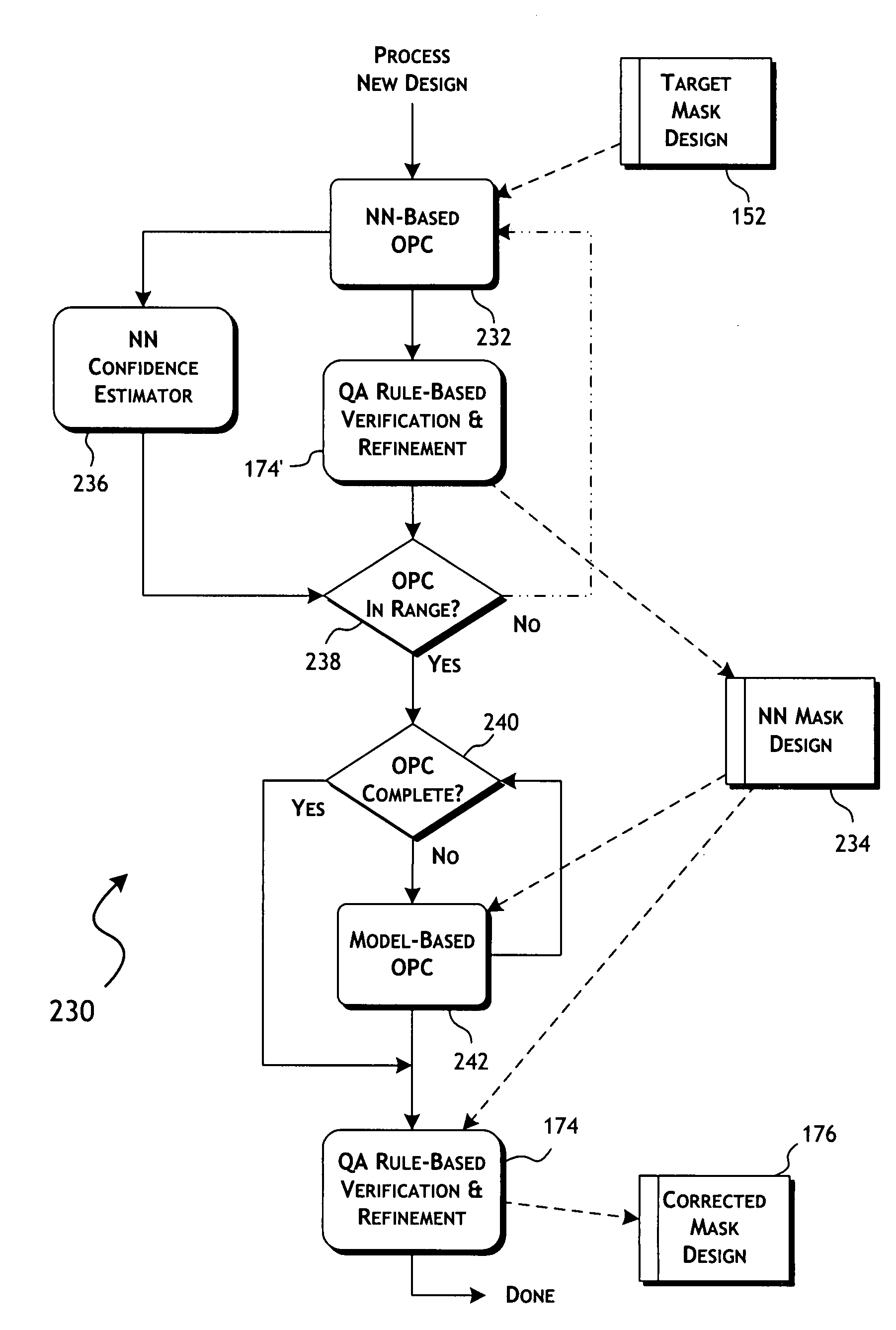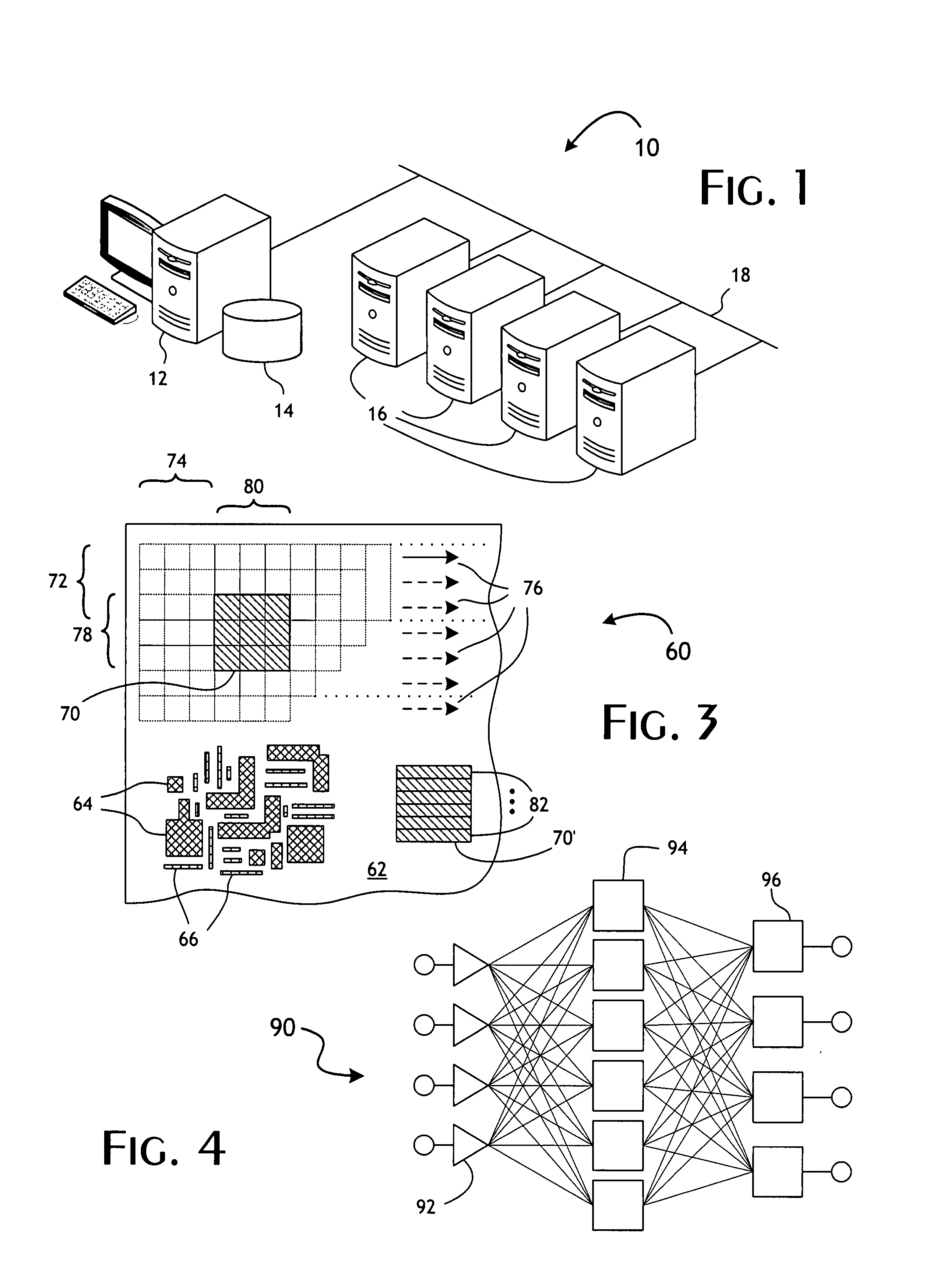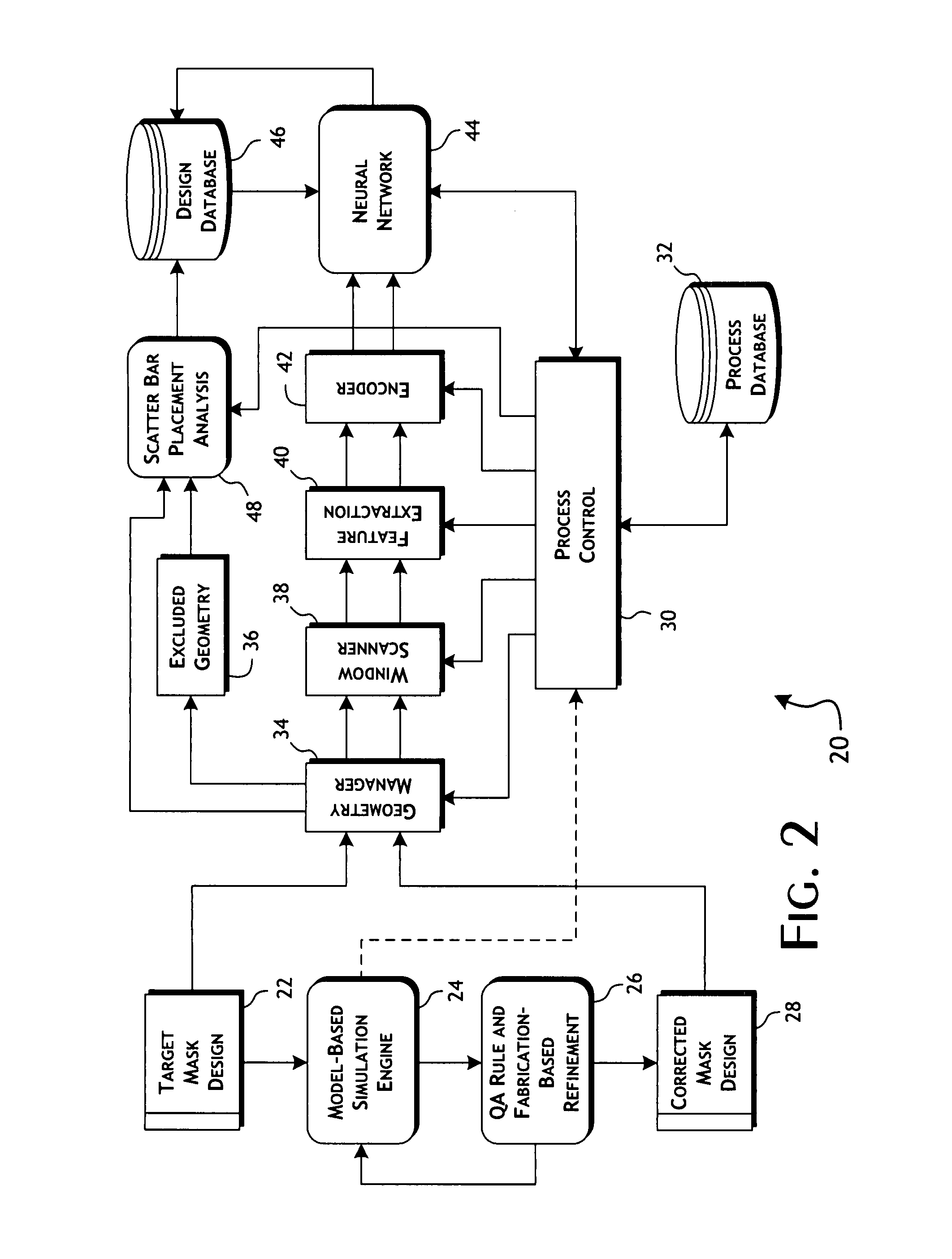Neural network-based system and methods for performing optical proximity correction
a neural network and optical proximity technology, applied in the field of lithographic photomask manufacturing, can solve the problems of reduced production yield or a limitation in the topological feature densities, high computational intensity of model-based opc, and significant increase in the complexity of model-based opc, so as to reduce training complexity, reduce computation requirements of model-based opc process, and efficiently handle different opc significant geometry features
- Summary
- Abstract
- Description
- Claims
- Application Information
AI Technical Summary
Benefits of technology
Problems solved by technology
Method used
Image
Examples
Embodiment Construction
[0028]The present invention provides for correction of the topological layout of geometric features present in optical projection masks used in the fabrication of integrated circuits. Multiple different physical masks are used in semiconductor fabrication processes that can conventionally involve upwards of forty different process steps. Each physical mask is defined characteristically by a computer-based design tool data file that is rendered in the manufacture of the physical mask. The present invention provides for the correction of the defining data file representation of the physical mask. In the following description, the term mask design will be used to refer to, appropriate to context, the computer-based data file representation of a physical mask. Further, the term optical proximity effect (OPE) will, appropriate to context, refer to the collection of effects, including resist internal diffraction, resist curing and removal variances, etch and diffusion related anisotropies...
PUM
 Login to View More
Login to View More Abstract
Description
Claims
Application Information
 Login to View More
Login to View More - R&D
- Intellectual Property
- Life Sciences
- Materials
- Tech Scout
- Unparalleled Data Quality
- Higher Quality Content
- 60% Fewer Hallucinations
Browse by: Latest US Patents, China's latest patents, Technical Efficacy Thesaurus, Application Domain, Technology Topic, Popular Technical Reports.
© 2025 PatSnap. All rights reserved.Legal|Privacy policy|Modern Slavery Act Transparency Statement|Sitemap|About US| Contact US: help@patsnap.com



